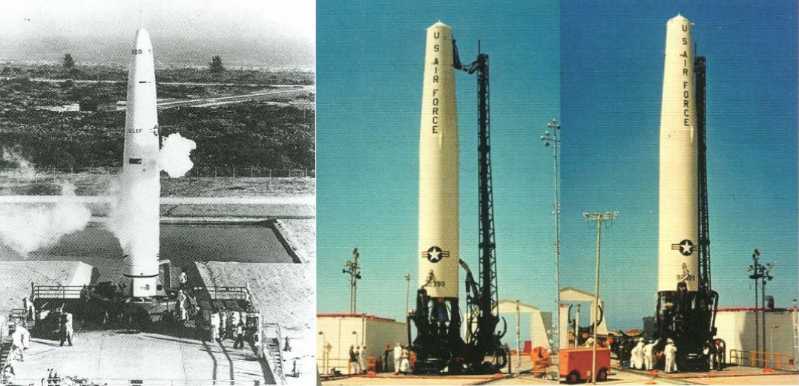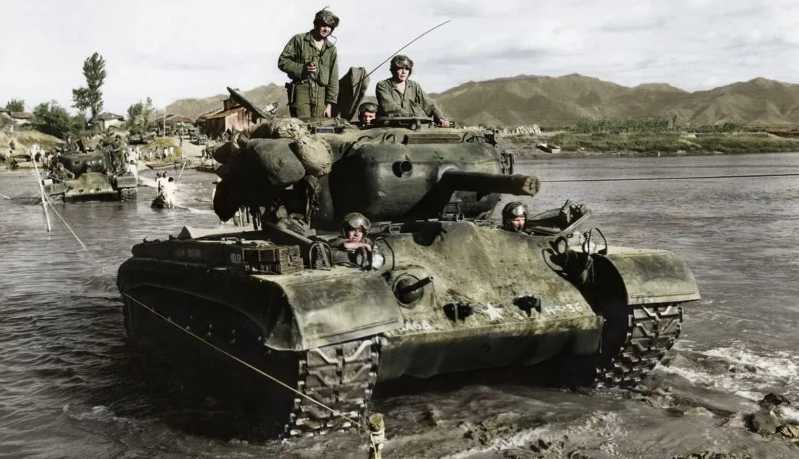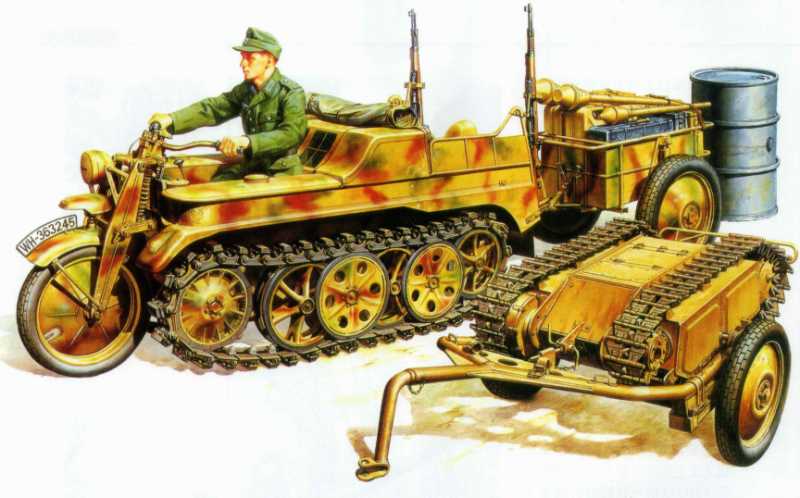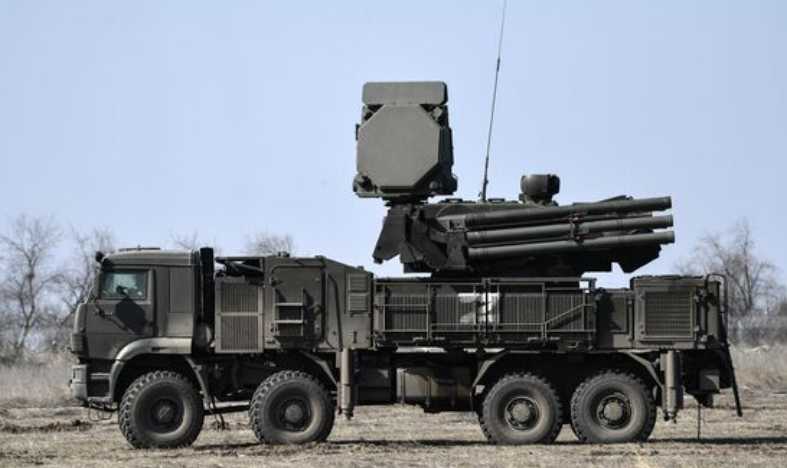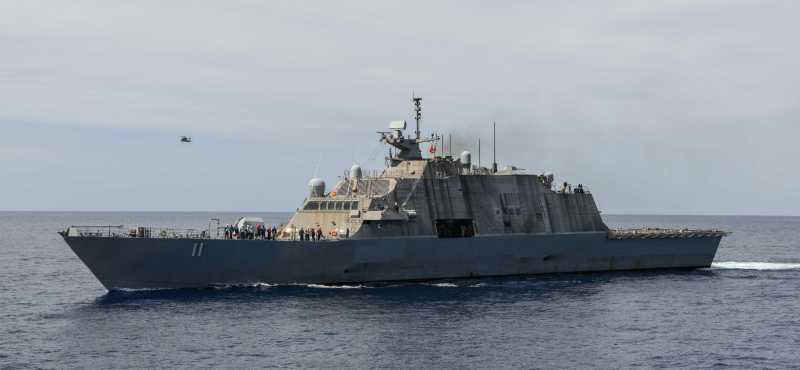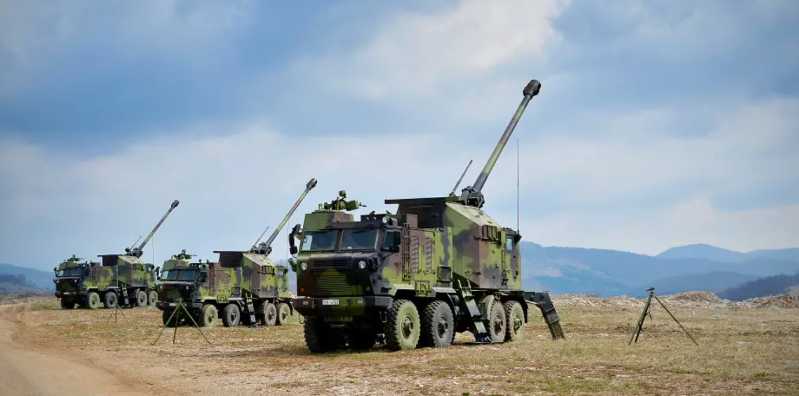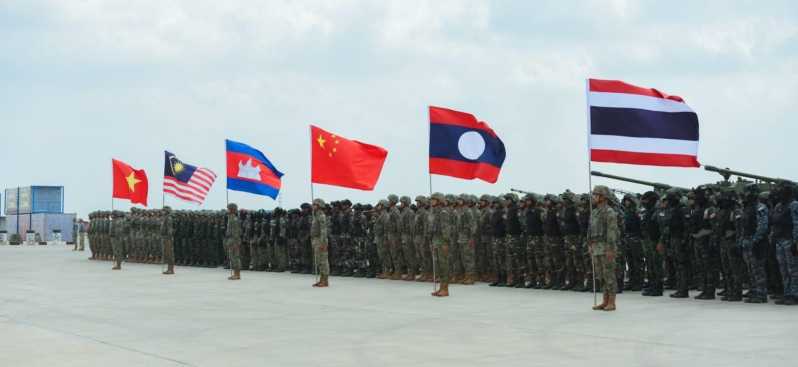Raytheon PIM-17A missile
The U.S. Air Force despised the Army’s missile defense system and believed that developing more of its own ballistic missiles would be enough to counterbalance the Soviet Union’s initiative to launch intercontinental missile attacks. The U.S. Air Force has also been competing directly with the Army in the development of anti-satellite weapons. The product is the Raytheon LV-2D missile (codenamed 437) that competes with the Nike-Zeus DM-15S. The 437 project began in February 1963. Unlike the previous focus on developing air-launched anti-satellite missiles, the U.S. Air Force began its own land-based anti-satellite missile research. The Raytheon LV-2D was developed using its own Raytheon PGM-17 medium-range ballistic missile as a carrier. The Raytheon LV-2D is 21.7 meters long, 2.44 meters in diameter and weighs 50 tons. It uses a two-stage rocket propulsion with a takeoff thrust of 743,000 kilonewtons. An enhanced booster taken from the Delta rocket was added to the first stage rocket. From 1964 to 1970, the US Air Force conducted a total of 16 Raytheon LV-2D missile test launches. As it inherited a large number of previous anti-satellite missile technologies, the test launch process was generally smooth. The test launch was evaluated as having actual combat capability and was given the code name PIM-17A.
Although none of them were under nuclear explosion conditions, the high-altitude nuclear explosion test conducted by the US Air Force in 1962 had already proved the lethality of nuclear warheads to its own satellites. Raytheon PIM-17A can theoretically intercept low-Earth orbit satellites with a maximum span of 1,300 kilometers and 2,800 kilometers. It is equipped with a MK49 nuclear warhead with an equivalent of 30,000 tons of TNT and a killing radius of 8 kilometers. Whether it is lethality or interception height, the "Raytheon PIM-17A" is much higher than the "Nike-Zeus DM-15S". In order to ensure the testing of the Raytheon PIM-17A and its combat effectiveness, the U.S. Air Force has also established two units, the 10th Aerospace Defense Squadron and the 24th Aerospace Defense Squadron, to perform anti-satellite combat missions. The 24th Squadron is also responsible for the launch and operation and maintenance of the Defense Meteorological Satellite Program (DMSP). The Raytheon PIM-17A and its space target surveillance radar and launch facilities are all deployed on Johnston Island.
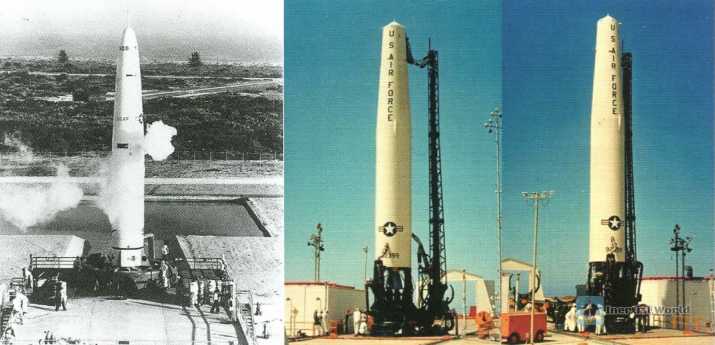

The Nike-Zeus DM-15S and Raytheon PIM-17A missiles have enabled the United States to obtain practical anti-satellite capabilities. Both missiles use nuclear warheads and face great limitations in actual use. The electromagnetic pulse waves from the nuclear explosion have the risk of interfering with the satellites of the party, and even have a serious impact on radar detection and communications in a large area on the ground. In addition, the deployment of these two anti-satellite missiles with nuclear warheads is also contrary to the "Partial Nuclear Test Ban Treaty" signed by the United States and the Soviet Union in 1963 and the "Outer Space Treaty" in 1967, which prohibit nuclear weapon testing in space and the international convention on the peaceful use of space. Finally, the Department of Defense canceled the development of anti-satellite missiles with nuclear warheads in 1975 and began the research and demonstration of anti-satellite missiles with conventional warheads.
However, it was not the US Air Force or the Army that first proposed the development of anti-satellite missiles with conventional warheads, but the US Navy. The "Early Spring" anti-satellite weapon program launched by the Navy in 1961 was the earliest and first anti-satellite missile in the United States to carry conventional killing payloads. The "Early Spring" program was used to counter the Soviet electronic reconnaissance and ocean surveillance satellites that might appear at the time, to prevent these satellites from tracking and locating US Navy formations in the open sea and guiding Soviet warships and submarines to attack. A plan to conduct conventional anti-satellite operations (without using nuclear weapons) using the A3 "Polaris" ballistic missile launched by the US Navy’s ballistic missile nuclear submarine. The operational principle of this plan is to use sea-based and ground-based optical observation systems to capture and locate Soviet ocean satellites. When the enemy satellite passes overhead, the optical homing system on the boat first finds the target to locate and track the target satellite. The "Polaris" missile is launched, and the final stage rocket restarts the levitable interceptor, hovering and waiting for 90 seconds at the predetermined position in the target satellite orbit. The signal receiving and transmitting device on the levitator simultaneously processes the target satellite signals from the submarine and the detection radar, and transmits its own position and the target satellite position to the submarine and the detection radar, receives and executes the attack command issued by the submarine, and the data link can provide control for the submarine, so that the anti-satellite missile enters the impact direction of the target satellite, and the proximity fuze detonates the warhead with several thousand steel balls.

In order to ensure killing, multiple "Polaris" missiles should be launched simultaneously. Several configuration schemes were evaluated in 1964. The test demonstration results of the optical tracker in the late 1960s were good, but the "Early Spring" plan did not have all-weather combat capabilities, and the use of ground (sea) optical observation was not the development direction. This plan was eventually cancelled in the late 1960s because of complex technical problems that exceeded the capabilities of the United States’ precision optics and microelectronics at the time. In the evaluation simulation test, it showed limited accuracy and destructive power. Although the Navy’s "Early Spring" plan ended in failure, its advanced ideas and technical applications in operational principles provided direct reference for the development of conventional warhead anti-satellite missiles that the US Air Force was exploring.
At that time, political leaders and security analysts in the United States and the Soviet Union increasingly realized that the growth of strategic weapons and the ability to withstand secondary strikes would cause unbearable losses to any party on both sides of the "Iron Curtain" to launch an attack. The pattern of "mutually assured destruction" in strategic weapons was formed, and a relatively stable strategic environment emerged. This stability and other factors led to a temporary thaw in US-Soviet relations in the late 1960s, early 1970s and mid-1970s, which can be described as "easing". Whether in the United States or the Soviet Union, satellites are closely related to nuclear deterrence missions, and the stability of "mutually assured destruction" has expanded to the space field. In the second half of 1971, the Soviet Union suspended the testing of the "partial orbital bombing system" and anti-satellite weapons. Within a year, the Soviet Union and the United States signed the "Strategic Arms Limitation Treaty" and the "Anti-Ballistic Missile Treaty", which represented an effort to reduce the pressure to further invest in strategic weapons and establish a formal mechanism for international crisis management.
However, the "de-escalation" situation did not last long. In 1975, the Soviet Union began testing ground-based lasers and other directed energy weapons, and in several incidents, lasers were used to interrupt the work of three US missile warning satellites and relay communication satellites. The following year, the Soviet Union resumed the test of the co-orbital anti-satellite interception system.

From the "Peak" plan to the emergence of "ASM-135"
1976 was a key year for the development of the US space and aerospace capabilities. Scientific and technological personnel achieved real-time satellite acquisition and return of target image data. Unlike the previous use of returning film capsules to recover strategic intelligence obtained by satellites, the new real-time transmission converts reconnaissance images into electronic signals and then sends them back to the ground receiving station. Thus, the United States has obtained near-real-time intelligence reconnaissance capabilities for the first time. This change has also led to the booming development of the commercial satellite industry and economy.
The Soviet Union’s resumption of co-orbital anti-satellite interception tests and its continuous improvement of its ability to use its own satellites and space systems to support conventional combat forces, coupled with concerns that the United States is increasingly dependent on satellite systems for national security, science and technology, and economic development, forced President Ford to issue National Security Resolution Memorandum No. 333 in 1976 before leaving office, which called for the development of "anti-satellite weapons commensurate with possible space crises and conflicts" and ordered the development of new anti-satellite missiles in January 1977. The era of non-nuclear kinetic lethal anti-satellite weapons in the United States began.
The "Spike" program was the first attempt, which included a two-stage missile carried by the F-106A58-0795 interceptor. The second stage of the missile is a terminal guidance vehicle propelled by a solid rocket engine, which intercepts the selected satellite in orbit and destroys it by collision. According to the US Air Force’s conception of a new generation of conventional warhead anti-satellite missiles, the use of oversized land-based missiles as carriers of anti-satellite weapons is abandoned, and small airborne anti-satellite missiles are redeveloped, making full use of the Air Force’s active fighters to implement large-scale and more flexible deployments, and to counter the increasing number of Soviet reconnaissance and surveillance satellites in low-Earth orbit with relatively less expenditure and deployment costs. In this way, there is no need to spend more money to build more ground launch facilities, and it is easier to pass the review of Congress. Previously, the Ministry of Defense has been troubled by the high deployment cost of the "Nike-Zeus" anti-missile system, which has been criticized by Congress. Congress believes that the large-scale deployment of land-based anti-satellite missiles based on the land-based anti-missile defense system in the country will become the target of large-scale attacks by the Soviet Union in wartime, and will stimulate the Soviet Union to deploy more co-orbital interceptors in orbit, which is not in the public interest of the country. The facility used for the Nike-Zeus DM-15S tests was destroyed by a hurricane in August 1972, and after an internal Air Force assessment, it was deemed that there was no value in repairing it, so it was terminated.
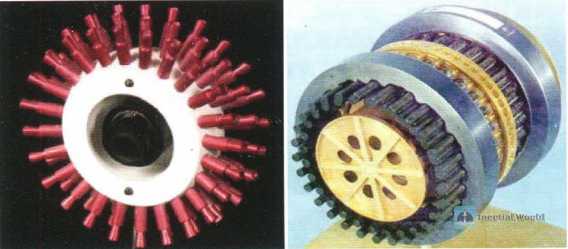
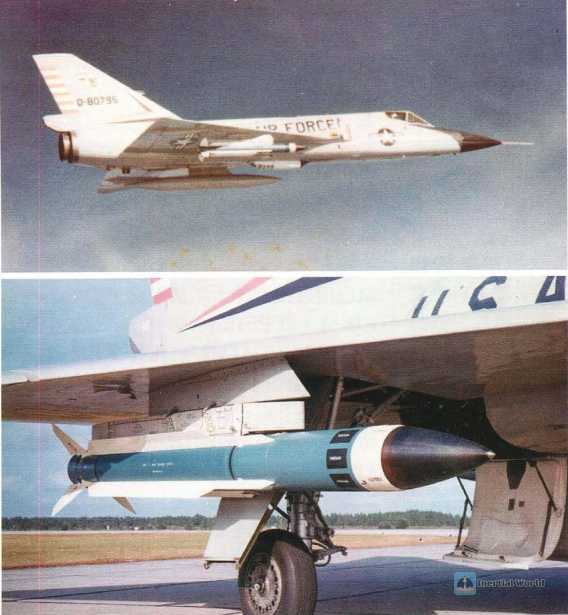
Ford’s presidency was too short. In addition, the United States had just emerged from the quagmire of the Vietnam War, the domestic economy was in a difficult depression, and Congress was stretched in the allocation of military budget funds. Naturally, it would not give too much energy and financial support to the development of anti-satellite missiles. During the implementation of the plan, only static flight tests were carried out using anti-radiation missile warheads, and the test was equipped with a dummy payload representing the seeker aircraft, which was installed on a special rack of the F-106. The "Peak" project still did not enter the actual development stage, but in 1978, its concept and part of the technical design were later adopted by a new anti-satellite development project. This new project was originally named the Prototype of Air-Launched Micro Aircraft (PMALS) and was managed by the Space Department of the US Air Force Systems Command. The mission of PMALS was to destroy the Soviet electronic reconnaissance and ocean surveillance satellites densely distributed in low-Earth orbit. At that time, the Soviet Union developed and launched a large number of special satellites for the Navy’s huge anti-ship missile launch cluster, which put great pressure on the US Navy’s aircraft carrier formation.
In 1979, the preliminary research of a new anti-satellite air-launched micro-aircraft was launched. The plan was to launch a two-stage high-speed missile from a fighter jet at high altitude, which could also be used to intercept ballistic missiles re-entering the atmosphere when necessary. Since the performance of the F-106 interceptor originally planned to be used was becoming increasingly backward, the Air Force decided to use the most advanced F-15 fighter jet at the time as the platform for anti-satellite launch. Subsequently, the plan entered the engineering development stage in October 1980, and the missile was given the code name ASM-135. The total weight of the ASM-135 anti-satellite ballistic missile is about 1,200 kilograms. The first stage of the missile is an improved version of the anti-radiation missile developed by Boeing (the specific model is unknown), and the second stage is the light launch vehicle Altair-3. The third stage is the micro-seeking aircraft itself. The missile itself has no communication or control circuits with the ground station or the carrier aircraft. The missile relies entirely on the pre-set trajectory for inertial navigation flight until the end of the trajectory, when it is guided by the infrared guidance system (the size of the guidance system is only equivalent to the size of a tomato head, and some of the technology is adopted from the anti-tank missile project funded and tested by the US Army). Therefore, detailed carrier aircraft delivery conditions and inertial navigation parameter calculations must be completed before launch. A special navigation calculation program has also been added to the F-15 mission computer responsible for carrying the missile, and the onboard computer prompts the pilot with the appropriate missile launch posture and timing.
According to the engineering plan, when the ASM-135 is in operation, the Air Force’s F-15 fighter jets will be based on the east and west coasts of the United States. The space target surveillance radar network will first track and obtain the orbital position and related information of the target satellite, and then transmit the information to the air defense operations center for processing, and calculate the various parameters required for the F-15 to launch missiles. After receiving the parameters, the F-15 and ASM-135 missiles on standby will take off and climb to the designated altitude of 8,000 to 16,000 meters before launching the ASM-135 missile. In the initial stage of the missile flight, the inertial navigation system and the tail control surface will control the missile flight. When it is about to approach the target, the missile will accelerate to fly towards the target and begin to lock the target with an infrared seeker, and finally destroy the target satellite with the powerful kinetic energy generated by the high-speed impact.
Unexpectedly, the emergence of ASM-135 has involved a policy debate in Washington, discussing whether the United States needs such a weapon system and the efforts to reach an agreement with the Soviet Union to limit anti-satellite weapons, which is for the United States to accept disproportionate benefits. Around ASM-135, some critics believe that continuing to develop and test anti-satellite weapons may undermine the delicate balance of nuclear deterrence between the United States and the Soviet Union since 1972.
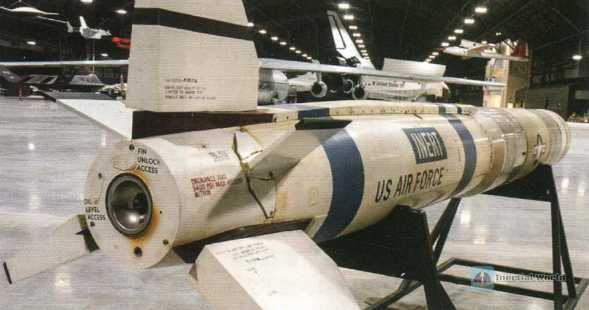
Although the military and security personnel who support the development of anti-satellite weapons have repeatedly emphasized that the possession of anti-satellite missiles is to give the enemy a necessary means of punishment when the US satellite is threatened and obviously attacked, telling the Soviet Union not to attack the US satellite at any time, otherwise it will be subjected to the same retaliatory attack. Critics believe that the United States has gained much more economic, technological and national security benefits from satellite systems than the Soviet Union. The US military, especially the land, sea and air strike forces with emerging precision-guided weapons as the core, rely more on satellites (especially intelligence, surveillance and reconnaissance, positioning, navigation and timing and military communication satellites) than ever before. If the conflict and battlefield extend to space, the United States will undoubtedly suffer the greatest loss. Continuing to develop and test anti-satellite missiles will only send a signal to the Soviet Union that the United States wants to use anti-satellites to prevent its attacks and damage the US satellite system, while the Soviet Union will believe that the benefits of attacking and destroying the United States’ advantageous satellites, especially those high-value, low-density satellites and orbital facilities, far exceed the costs of attack and destruction, so that it can gain the initiative and even victory in military affairs.
In fact, the Soviet Union did think so and always maintained the development, testing and innovation and upgrading of co-orbital interception satellites and anti-satellite laser devices. The Soviets would not be so foolish as to launch a destructive attack on the US missile early warning satellites before the conflict eventually evolved into a full-scale war, thereby incurring a US nuclear strike, but would wisely use laser irradiation to interfere with US satellite reconnaissance. Critics also pointed out that the worst case scenario is that the Soviet Union, which is at a disadvantage in terms of overall satellite technology, will be blinded when its intelligence satellites are attacked. They may be afraid of the worst and judge that the US nuclear attack has begun, and launch a nuclear counterattack, which is exactly what the United States, which was at a relative disadvantage in the number and types of strategic missiles at the time, could not afford.
In the 1970s, the United States and the Soviet Union did not reach an agreement in the three rounds of negotiations on the anti-satellite weapons treaty, but both sides learned about each other’s attitudes on many issues during the negotiations. In July 1977, the United States took the lead in proposing negotiations with the Soviet Union on anti-satellite weapons. In the second year, the Carter administration adopted the so-called "dual-track" policy for the development and testing of anti-satellite weapons: trying to reach an anti-satellite weapons arms control agreement with the Soviet Union, but at the same time authorizing the continued advancement of the US anti-satellite weapons development plan as a bargaining chip during the negotiations. If the negotiations fail, anti-satellite weapons provide a minimum insurance lever. In 1979, the third round of negotiations was suspended due to the Soviet army entering Afghanistan. The criticism and opposition from Washington against anti-satellite weapons has become much smaller, but the restrictions issued by Congress on the ASM-135 test have become increasingly strict. Those who support the restrictions on the ASM-135 test insist that continuing such anti-satellite tests can only lead to an arms race between superpowers in another type of strategic weapons. In 1982, after Reagan took office as the new president, he issued National Security Decision Directives No. 12 and 13, which clearly stated: "The primary goal of national security is to deter direct attacks on the United States and its allies, including nuclear attacks. In the event of a nuclear war, victory must be achieved."
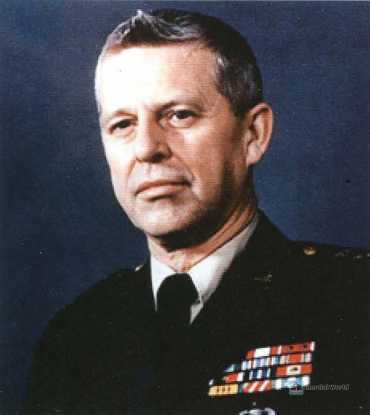
The White House’s National Security Directive No. 32, issued in May 1982 based on Reagan’s strategic design, pointed out: “Deterrence can be best achieved by establishing a new defense posture that will cause the Soviet Union to believe in any emergency that the outcome of a war is dangerous and uncertain, thereby abandoning the intention to attack first.” Among them, establishing a new defense posture is the core of the “Strategic Defense Initiative” later issued by the Reagan administration - to achieve strategic defense supported by high-tech advantages, increase the uncertainty of the Soviet Union’s first strike, and thus make the United States’ strategic deterrence more credible. The Reagan administration set its sights on the space sector. In Order No. 42 issued on July 4, it advocated that the primary goal of the US space policy was to maintain the US’s leadership in space and take necessary measures to ensure the safety of space activities. Its specific principles involved "maintaining the survivability and persistence of the US space system" and "developing and deploying anti-satellite capabilities to deter threats to the space systems of the United States and its allies."
At that time, there were competing views from two parties on how to achieve the "Strategic Defense Initiative" and what technical route to adopt to achieve it. One side was Reagan’s military adviser during the campaign, Army Lieutenant General Graham, and the other side was Reagan’s close friend Benderson and the head of Lawrence Livermore National Laboratory, nuclear physicist Teller. Graham insisted on using existing technology and equipment to promote the construction of the defense system as soon as possible, and to achieve strategic defense cheaply and quickly, such as deploying space rocket interceptors in orbit to destroy incoming targets. Benderson and Teller actively advocated the research of systems composed of other advanced technologies such as lasers and X-rays that take a long time to acquire. In his report to President Reagan, Graham strongly recommended that the ASM-135 anti-satellite missile be included in the construction of the defense system, and the subsequent test results fully proved that the ASM-135 is an anti-satellite weapon with excellent performance, small size and flexible deployment. Perhaps due to President Reagan’s obsession with the high-tech capabilities of the United States, he eventually chose the proposals of Benderson and Teller, and Graham’s "low-tech" plan withdrew from the competition. However, President Reagan still approved the test of ASM-135.
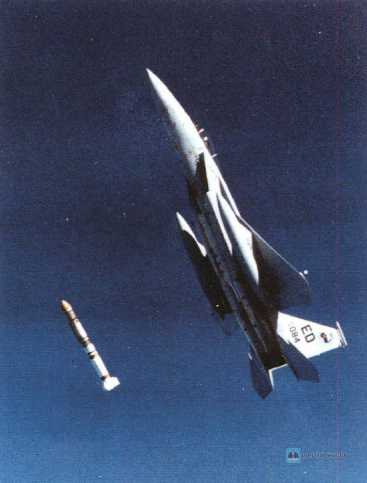
The engineering development stage of ASM-135 went quite smoothly. Test firing began in 1984 and was carried out 5 times. Two test launches were conducted on January 21 and November 13 of that year. In the first test, the missile successfully passed the test without carrying a micro-flight kill vehicle. When the missile warhead was aimed at a star, the missile failed. In the third test launch on September 13, 1985, an F-15A fighter jet piloted by pilot Doug Pearson launched an ASM-135 about 322 kilometers west of Vandenberg Air Force Base, destroying Solwind P78-1 (at an altitude of 515 kilometers), a solar wind observation satellite that was almost scrapped in 1979. During the test, when the F-15A was flying at Mach 0.934, the ASM-135 automatically received ground instructions and launched at 38,100 feet. The 30-pound (13.6-kilogram) micro-flying kill vehicle collided with the 2,000-pound (907-kilogram) Solwind P78-1 satellite at a closing speed of 17,378 kilometers per hour, destroying the satellite.
After that, the U.S. Air Force’s anti-satellite equipment plan was to purchase 134 ASM-135 anti-satellite missiles at a cost of US$3.6 billion. According to the original plan, two F-15 squadrons with a total of 36 F-15s would be formed to perform anti-satellite operations, deployed on the east and west coasts of the United States, and began to form combat effectiveness in 1987. Compared with the predecessors of anti-satellite missiles, ASM-135 was the closest to actual combat deployment among the US anti-satellite weapons at that time, but it eventually missed the actual combat deployment! In March 1985, the US-Soviet arms control negotiations, which had been interrupted for a time, resumed in Geneva. Unlike previous negotiations, this negotiation put space weapons, strategic nuclear weapons and medium-range nuclear weapons together for the first time. The US and the Soviet Union each had their own goals, and they both wanted to maintain their own advantages and try to weaken the advantages of the other side. The United States suffered from the threat of the Soviet Union’s heavy land-based strategic missiles and SS-20 medium-range missiles, and constantly emphasized that the focus of the negotiations should be to "substantially cut" the Soviet Union’s dominant offensive strategic and medium-range nuclear weapons. The Soviet Union felt that space had become a new place for arms competition. If the space weapons competition continued on a large scale for a long time, it would be an extremely heavy burden on the domestic economy and technology, and the United States might have the upper hand in this field. Therefore, it was necessary to use the negotiations to defeat the US "Strategic Defense Initiative", that is, the "Star Wars Plan". The Soviet Union seized the increasing friction between the United States and its Western allies in economic and trade, as well as the differences on the "Strategic Defense Initiative" and the issue of intermediate-range nuclear weapons, and drove a wedge of separation, successfully forcing the United States to include the full set of space weapons programs in the "Strategic Defense Initiative" (including anti-satellite weapons and anti-missile defense systems) on the important agenda of arms control negotiations.
After entering the 1980s, in terms of anti-satellite weapons, the Soviet Union was slightly ahead of the United States in terms of proximity fragments, co-orbital interceptors, and directed energy technology, while the United States relied on its advantages in microelectronics and computer technology to surpass the Soviet Union in direct collision technology. On the whole, the Soviet Union had more trump cards than the United States, and established professional anti-satellite combat forces and support forces earlier than the United States and formed combat effectiveness. The "main force" in the Soviet anti-satellite system has evolved from IS, IS-M, and ISMU to the new generation of Naryad-V, which can simultaneously attack satellites and other spacecraft in low-Earth orbit and geosynchronous orbit. The ASM-135, which has completed the test and is about to be put into service, is undoubtedly a weight that will break the balance of anti-satellite power between the United States and the Soviet Union. However, it is not its technology that determines the fate of ASM-135, but the diplomatic policy and legal factors at the time. At the Geneva negotiation table, the United States and the Soviet Union temporarily reached a procedural agreement. The Soviet Union stopped further testing of anti-satellite weapons and reduced some offensive strategic and tactical nuclear weapons; the United States compromised on the "Strategic Defense Initiative", only conducting technical reserves and laboratory research on the entire set of space weapons programs and delaying deployment. And the "Pershing" medium-range missiles that have been deployed in Europe will be withdrawn. On the one hand, since the public release of the "Strategic Defense Initiative", the Reagan administration has been facing criticism and pressure from Congress. The debate and opposition to the "Strategic Defense Initiative" breaking the US-Soviet balance formed since the signing of the "Strategic Arms Limitation Treaty" in 1972 has been fierce, and the public is more worried that this will eventually push the country into a new arms race vortex or even the brink of war. The Democratic Party threatened that Congress would significantly cut funding for SDI, which is tantamount to cutting the SDI’s fire. Since 1983, Congress has begun to issue a series of restrictions and procedures on ASM-135 testing. In December 1985, shortly after the successful test and destruction of a satellite, lawmakers banned further testing of space targets. In order to ease the tense international situation with Japan, the US Congress rejected the US Air Force’s plan to "purchase 134 ASM-135 anti-satellite missiles at a cost of US$3.6 billion."
"Nuclear directed energy X-ray laser"
In August 1983, the Soviet Union proposed a new draft treaty to ban space weapons and announced a unilateral suspension of anti-satellite system testing (the United States first proposed to negotiate with the Soviet Union on anti-satellite weapons in July 1977, but the negotiations were interrupted by the Soviet army’s entry into Afghanistan in 1979). Although the draft ban on the use of space weapons is bound to affect related projects involved in the SDI strategic defense plan, the Soviet Union’s proposal is not actually a direct response to the US plan. On the contrary, it is a continuation of the Soviet Union’s previous work on banning space weapons, and it is also a response to the international scientific community’s request to ban the development of anti-satellite systems. However, this attempt was obviously unsuccessful in the international environment at that time. The main reason was that the US-Soviet relations deteriorated sharply in the fall of 1983. In November 1983, the United States began to deploy "Pershing" medium-range missiles in Europe, and the Soviet Union withdrew directly from the Geneva arms control negotiations. The latest declassified archives from the CIA and the Soviet Union have proved the above points.
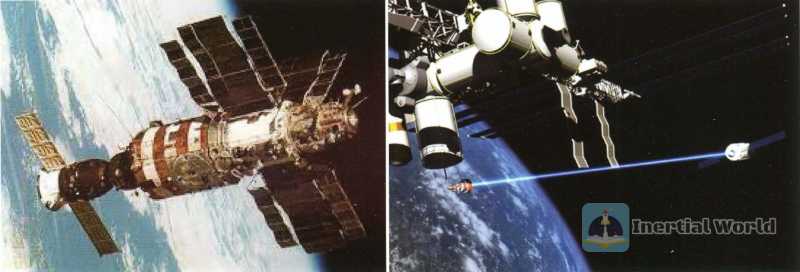
The declassified Soviet data show that because of the US SDI strategic defense plan, the Soviet Union’s space-based laser anti-satellite and air-based anti-satellite system plans, which had been initiated and developed as early as the mid-1970s, were significantly accelerated. The "Racing" space-based laser anti-satellite system has always been considered to be inextricably linked to the United States’ proposal to establish a space-based missile defense system, namely the "Smart Pebble" plan, but there is no direct evidence to prove this. It is just a speculation based on the time dimension and sequence. In the early 1970s, the Soviet Union’s "Salute" series of space stations attracted the attention of the US military intelligence agencies. The United States has always been worried that the Soviet Union’s "Salute" space station will be equipped with directed energy weapons including high-energy lasers and particle beams. At that time, the Soviet Union did formulate a plan to deploy particle beam weapons in outer space, and conducted several particle beam weapon tests on the Salyut space station and the Soyuz spacecraft. In the 1980s, a series of laser weapon tests were conducted on the Mir space station, such as using laser beams to aim and track intercontinental ballistic missiles.

These tests have stimulated the development of space-based defense systems in the United States. After the SDI Strategic Defense Initiative was proposed, technical pre-research and demonstration began quickly, and some technologies and systems that had been started for many years before the initiative was proposed were also involved. At first, Reagan’s close friend Benderson and the head of Lawrence Livermore National Laboratory, nuclear physicist Teller, actively advocated the use of X-rays and lasers as the core technologies of space-based defense systems. Livermore Laboratory made a breakthrough in the research of nuclear directed energy X-ray lasers (mainly funded by the US Department of Energy), but before the key test of this new concept in November 1980, the breakthrough was only achieved in theoretical research and in the laboratory. Nuclear directed energy effects include microwaves and non-nuclear explosion pumped available power, which is generated by a pulsed plasma magnetohydrodynamic generator. The generator is produced and tested by ARTEC United Corporation. The capture, tracking and aiming design of the X-ray laser concept design is produced and tested by Martin Marita Corporation.
In Teller’s proposal, the X-ray laser code-named "Excalibur" can theoretically destroy a specific target at a distance of 1,000 miles or even farther, through a highly directional beam with localized enhanced brightness and efficiency that is 1 million times more effective than a nuclear bomb. X-ray lasers are more effective in the middle and end stages of strategic defense, generating 100,000 independently targeted beams from an X-ray component, each of which is quite lethal even to distant hard flying targets, and also capable of striking targets deep in the atmosphere. Compared with traditional directed energy weapons, the "Excalibur" X-ray (and many other nuclear directed energy weapons under development) can perform multiple interceptions (parallel killing).
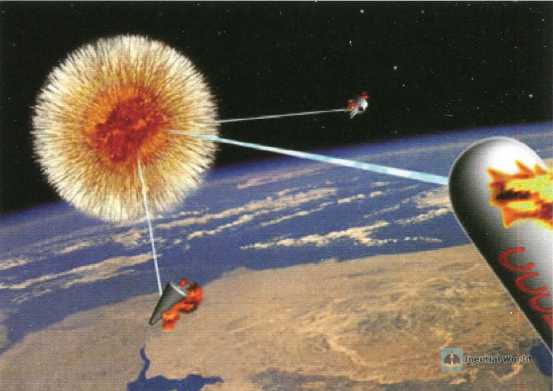
The X-ray laser concept needs important physical characterization and calibration experiments before it can be weaponized to show that it is not just a speculation. By 1986, many of the research areas had encountered bottlenecks and difficulties, including the research on microwave rays, high-energy lasers, and satellites that can deploy space-based reflectors that began in the late 1960s. Teller’s nuclear directed energy X-ray laser encountered setbacks in several key ground tests in 1986, and was eventually canceled in July 1992 due to the US Department of Energy’s new policy on the number of nuclear tests (the policy stipulates that the United States cannot conduct more than six nuclear tests per year). The research on high-energy lasers by the Defense Advanced Research Projects Agency (DARPA) and the Ballistic Missile Defense Agency (MDA) focused on the "Alpha" laser program, which began in 1979. The "Alpha" laser program was born out of the Mid-Infrared Advanced Chemical Laser (MIRACL) program. It was originally a baseline demonstration laser developed by TRW for the US Navy. After testing, it became the first megawatt-class continuous-wave chemical laser in the West, with an energy spectrum distributed in 10 lasing lines between 3.6 and 4.2 wavelengths. After the first lasing in 1980, the laser accumulated lasing for 3,000 seconds. It was originally intended to defend against and intercept Soviet anti-ship missiles, but this plan was subsequently abandoned due to changes in the operating environment (atmospheric conditions). DARPA saw the prospect of this directed energy anti-satellite and anti-missile technology, and proposed the "Alpha" laser program based on this. The development goal is to make megawatt-class lasers reach high-power weapon level and be optimally mounted on space-based platforms for anti-satellite and anti-missile operations.
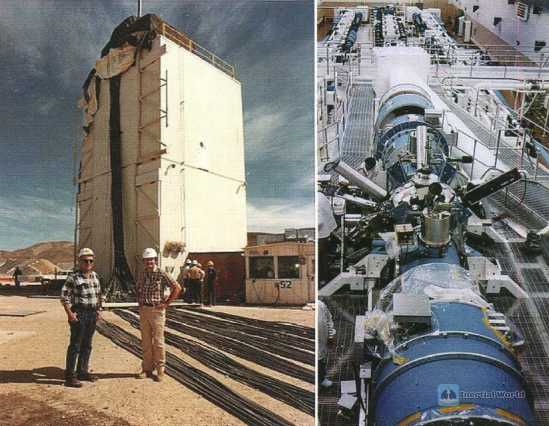
、
The "Alpha" laser program is used to experimentally verify the principles of high-energy lasers, demonstrate the efficient extraction of megawatt pulses, and obtain beam quality sufficient to become an efficient space-based laser weapon. The program provides ground demonstrations of high-power infrared chemical lasers for various space applications. TRW is responsible for the equipment manufacturing and testing phase. Davert, director of the Strategic Defense Program Agency responsible for the chemical laser project, is responsible for the overall coordination of all stages from research to testing. Chemical lasers, such as mid-infrared hydrogen fluoride lasers, are the most mature of all high-energy laser technologies at the time. Deploying spacecraft with chemical lasers in space can attack during the boost phase of enemy ballistic missiles, providing early strike power against false targets and multiple warheads. The United States conducted numerous ground laser tests in the 1960s and 1970s. When deploying laser weapons on the ground, the land site must be in a cloudless area or at a very high altitude to avoid most of the atmospheric turbulence that causes beam attenuation and distortion. Unlike land-based lasers, space-based lasers do not have to deal with atmospheric effects that hinder or limit operation. This is an important condition for selecting laser wavelength. The atmospheric attenuation of laser beams under clear weather conditions is related to the wavelength. For example, land-based lasers must operate at a wavelength equivalent to the atmospheric attenuation window. However, this wavelength may not be suitable for other design characteristics, such as energy selection, beam extraction efficiency or power conversion efficiency, and optical system design. Space-based lasers, on the other hand, have no atmospheric attenuation problems and can operate at any wavelength. There are actually no external vibration sources in the space environment, such as wind vibrations or ground vibrations. In addition, the vacuum environment of space provides the best exhaust medium for chemical lasers.
According to the data, the Alpha laser is a hydrogen fluoride laser operating at a wavelength of 2.7 microns with a starting power level of 2MW. Its design is to add multiple generator components together to reach a laser power of 10MW. The first Alpha laser was installed at the San Juan Capistrano Test Site. By mid-1986, TRW had completed the manufacture of an optical resonator and tested a coupled system consisting of six chemical laser resonators, using a modular design that could increase the power by adding resonator loops. This greatly enhanced the confidence in the success of the overall project. Experiments with Rocketdyne’s Sigma chemical laser (funded by the US Air Force) proved that the cylindrical chemical laser could output high-quality beams. The results proved that most of the basic designs of the Alpha laser were standard and feasible.

In August 1987, TRW began testing the Alpha laser. The first batch of tests tested the system at room temperature to check whether the laser was assembled correctly. The second batch of tests, which began in December of the same year, checked whether the laser could form free fluorine atoms necessary for the laser medium. However, in January 1988, the test was interrupted by a fire caused by the test personnel’s misoperation, which burned the valves, pipes and the laser’s oxidizer supply. The smoke from the fire penetrated into the vacuum laboratory and contaminated the laboratory simulating the space environment. The direct economic losses caused by the fire were not large, but the cleanup cost 3 million to 6 million US dollars and delayed the progress of the test for several months. After the accident cleanup, the researchers completed the second and third batches of tests, injected hydrogen into the medium, and measured the benefits. The fourth batch of tests was carried out on April 7, 1989, and the laser operated for 0.2 seconds and emitted light for the first time. Colonel Thomas Meier, Director of Directed Energy Technology at the Strategic Defense Program Agency, who observed and monitored the test on site, recalled: "The main purpose of this test is to ensure that all sensors work reliably and sensitively, that all lenses are aligned, and that there is no foreign matter in the high-energy beam channel.

After the first successful light emission, researchers conducted several full-power tests from August to September 1990 to determine whether the laser could operate as expected and whether it could meet the requirements for the final full-power test at any time, which is the key to the "Alpha Laser Project". The researchers also successively solved problems including In November 1990, the laser achieved megawatt operation, which was successfully repeated in May 1991. After reaching full power, the plan turned to technical optimization work, trying to get the maximum output from the system, and improving the laser device from the experience and lessons learned in the early stage of the test, including improving diagnostic adjustment, solving small vibration and electrical noise problems, determining the operating conditions when changing chemical flow rate and operating temperature, and the effect of increasing power on beam quality and stability.
As the test progressed, in order to verify stable high-quality beam control and solve all technical problems involved in the high-power integration of laser devices and essential beam control and beam expansion subsystems, the Strategic Defense Program Agency and TR W Company plans to connect the Alpha high-energy laser to a large reflector with a beam control system, namely the "Alpha-Advanced Space-Based Large Reflector Integration"
According to the preset plan, the "Alpha-Advanced Space-Based Large Reflector Integration" plan focuses on completing the beam expander structure and the 4-meter large telescope structure, which will be completed in 1991. In 1992, the focus will be on manufacturing the remaining test components, including a lightweight large-aperture multi-piece combined reflector, a digitally controlled overall beam control system, alignment and wavefront correction, a full set of interactive control systems, and energy manipulation devices. The two main structures of the beam expander and the large telescope will be combined in 1995 and ground testing will begin in the late part of that year. The ground test is expected to last 6 to 8 months, which is a true Preparations are being made for entering space.
In terms of beam control, the advantages of using large space-based reflectors are obvious, which can produce precisely parallel laser energy beams, but it is technically difficult to make the reflectors large and light, and they must also be sturdy and durable to avoid bending during rapid and repeated target shooting. When delivering the heat flux of high-energy laser beams, deformation must not occur. In order to shorten the length of the optical system, an optical system with an extremely short focal length must be used, which requires the positioning tolerance of the primary and secondary mirrors to be less than a few microns. The Strategic Defense Program Agency and TRW have studied several adaptive optical systems and adjustment system methods through segmented reflectors, various advanced materials, and various methods based on low-expansion glass to demonstrate and solve technical problems suitable for obtaining the required laser beam expansion system. In the experiment, it was also confirmed that output wavefront detection can be used for beam control. Multiple combustion-driven hydrogen fluoride chemical laser beams can be coherently combined through coupling of the resonant cavity itself or using the master oscillator power amplifier configuration.
The results of the capture, tracking and targeting tests of the Alpha Laser and the Advanced Space-Based Large Reflector Program will be used for ground and flight tests of chemical lasers. Most of the key issues of space-based lasers can be solved in ground tests, but the exhaust treatment of lasers can only be solved in space tests. Researchers need to solve the exhaust composition of the laser to ensure that the system lenses and other components are not deteriorated by the exhaust.
Objective constraints in the space environment are a problem that must be faced and overcome. For example, the impact of pollutants in space (such as thrust reactants generated by the laser itself or satellite maneuvers), atoms and micro-debris on the membrane layer of large optical systems used in space for a long time. There are more oxygen molecules in space than expected, and they may cause major damage by corroding the reflector material. This may happen to the surface of large space-based reflectors and optical systems, especially those that transmit large energy, due to debris in space. In space deployment, with the technical conditions at the time, astronauts could only manually assemble optical systems including large space-based reflectors. Manual assembly will bring unique pollution problems. Contamination could come from thruster exhaust or the extravehicular suits and maneuvers of astronauts installing equipment. Given that short-wavelength laser optics are particularly sensitive to very delicate optical damage and contamination, these environmental factors could have a significant impact on the deployment, size, and materials of space-based optical systems, especially high-power ones.
The Strategic Defense Program Agency hopes to obtain high-power beams through advanced space-based large reflectors to achieve stable emission of clean and efficient high-power laser beams. Ground tests have been advancing intensively, and repeated tests have been carried out to ensure absolute system reliability and stability. A large number of research results have been achieved to prepare for the actual entry into space orbit. However, doubts and oppositions from Congress have always been there, believing that the Strategic Defense Initiative and the costly construction of the Strategic Defense System are not protecting the security of the United States, but pushing the US-Soviet confrontation to a new dimension and level.
Some scientists and physicists who are skeptical about the use of directed energy technology in the construction of the Strategic Defense System insist that it is impossible to develop a space-based laser that can destroy intercontinental ballistic missiles in the 21st century. A series of tests conducted by skeptical and opposing physicists at the Los Alamos National Laboratory show that if a space-based laser is deployed in space orbit, the beam quality itself needs to be improved by at least 100 times to destroy intercontinental ballistic missiles. That same year, the American Physical Society (APS) published their review of directed energy weapon development, which, after the necessary declassification process, was released to the public in March 1987. This lengthy report stated in no uncertain terms that to be effective against ballistic missile boosters or re-entry vehicles, directed energy weapons must have an energy density high enough to destroy them almost instantly. This energy level depends on the physical properties of the target, including energy absorption rate and various structural forces. To cause the target to degrade or rupture in a short period of time, only relatively low levels of directed energy are required. This is particularly consistent with directed energy weapons in the soft kill category, such as neutral particle beams or high-power microwaves, which can theoretically damage the electronics of boosters or passive stage vehicles, rendering them uncontrollable, or disrupt the timing sequences within the target, rendering it incapable of attack. This can be done at power levels far lower than those required to destroy boosters or passive stage vehicles in the hard kill category. To achieve the standard of hard kill, it is necessary to spend more time and effort on the power level and conversion efficiency of the main energy, the brightness and quality of the beam, and the accuracy and stability of the beam on the target, and deal with and resolve the contradictions and balance between them. The conclusion is that it will take at least ten or even twenty years of work before directed energy weapons can achieve the performance that is truly needed in actual combat.

Coincidentally, the Soviet Ministry of Defense Industry began to evaluate the status and value of directed energy weapons shortly after the United States announced the launch of the SDI strategic defense program. The Soviet Military Industrial Committee specially established a committee composed of scientists, military and defense industry representatives, chaired by the famous nuclear fusion scientist and physicist Velikhov Yevgeny Pavlovich. The committee concluded that it was unlikely that a prototype of a space-based weapon system based on directed energy technology would be deployed before the year 2000. At most, it could only be demonstrated by experimental irradiation and firing to accumulate experience and data reference for further maturity, which could be applied at the anti-satellite level, but it was still a long way from actual combat application at the anti-missile level.
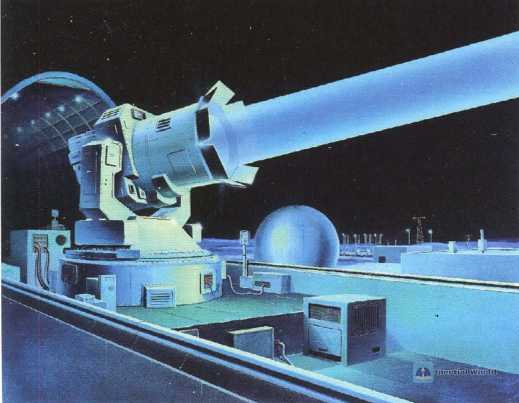
Opponents in Congress used the opinions of physicists as a reason to attack the SDI strategic defense plan, because the SDI plan took the countermeasure of the Soviet Union’s dominant intercontinental ballistic missiles as the main line, and anti-satellite was not actually the focus. This factor caused Congress to greatly reduce the funding for the plan starting in 1987, which inevitably affected the "Alpha Laser and Advanced Large Space-based Reflector" plan. The Strategic Defense Program Agency had been planning to conduct a space-based chemical laser test code-named "Zenith Star (StarLite)". However, due to the substantial reduction in the directed energy funding in fiscal year 1991, the Strategic Defense Program Agency found that it could no longer afford the huge and heavy "Zenith Star" space test, which was estimated to cost about $600 million. Previously, there was no sufficient funding in the ground test to build equipment that fully met the space operation requirements for the ground test in time. TRW had to try to get as many equipment that met the space operation requirements into the ground test as possible with the given funding and available time, but even the ground Ground tests also cost a lot of money. Further budget cuts mean that ground tests of the Zenith Star space-based chemical laser may be postponed to 1997-1998.
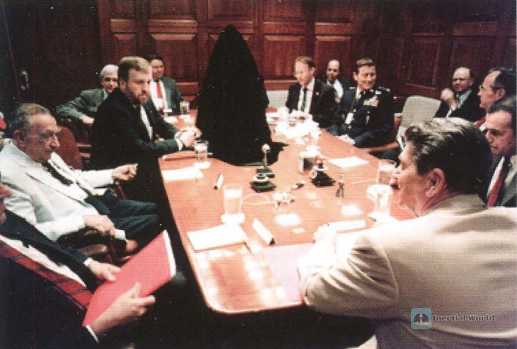
In view of the deployment of a space-based defense system based on cutting-edge technologies such as high-energy lasers and X-rays, considering Due to the high cost and stability, the Strategic Defense Program considered kinetic energy weapons (KEW) in the first phase of the SDI Strategic Defense Initiative. As the demonstration progressed, it was decided to make kinetic energy weapons the preferred weapon system for SDI, and to place directed energy weapons (DEW) in a relatively secondary position. This is not only a technical consideration, but also has a greater impact on the fiscal budget and funding allocation. In fact, by the time the first phase of the SDI Strategic Defense Initiative was completed, the Department of Defense and the Department of Energy had spent $140 billion on the SDI plan. Yuan. In October 1988, the Pentagon stipulated that the cost of the first phase of the system would be $69.1 billion. Questions and criticisms from both the Senate and the House of Representatives continued, with statements such as "the deployment of a space-based defense system will completely undermine the 1972 bilateral treaty on the limitation of anti-ballistic missile systems between the United States and the Soviet Union."
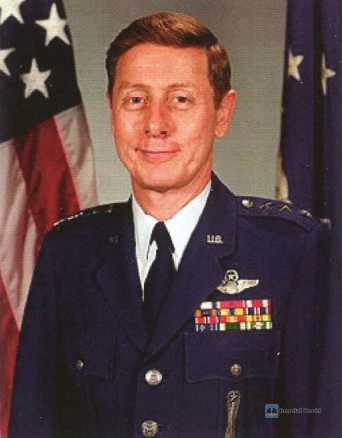
To be continued


